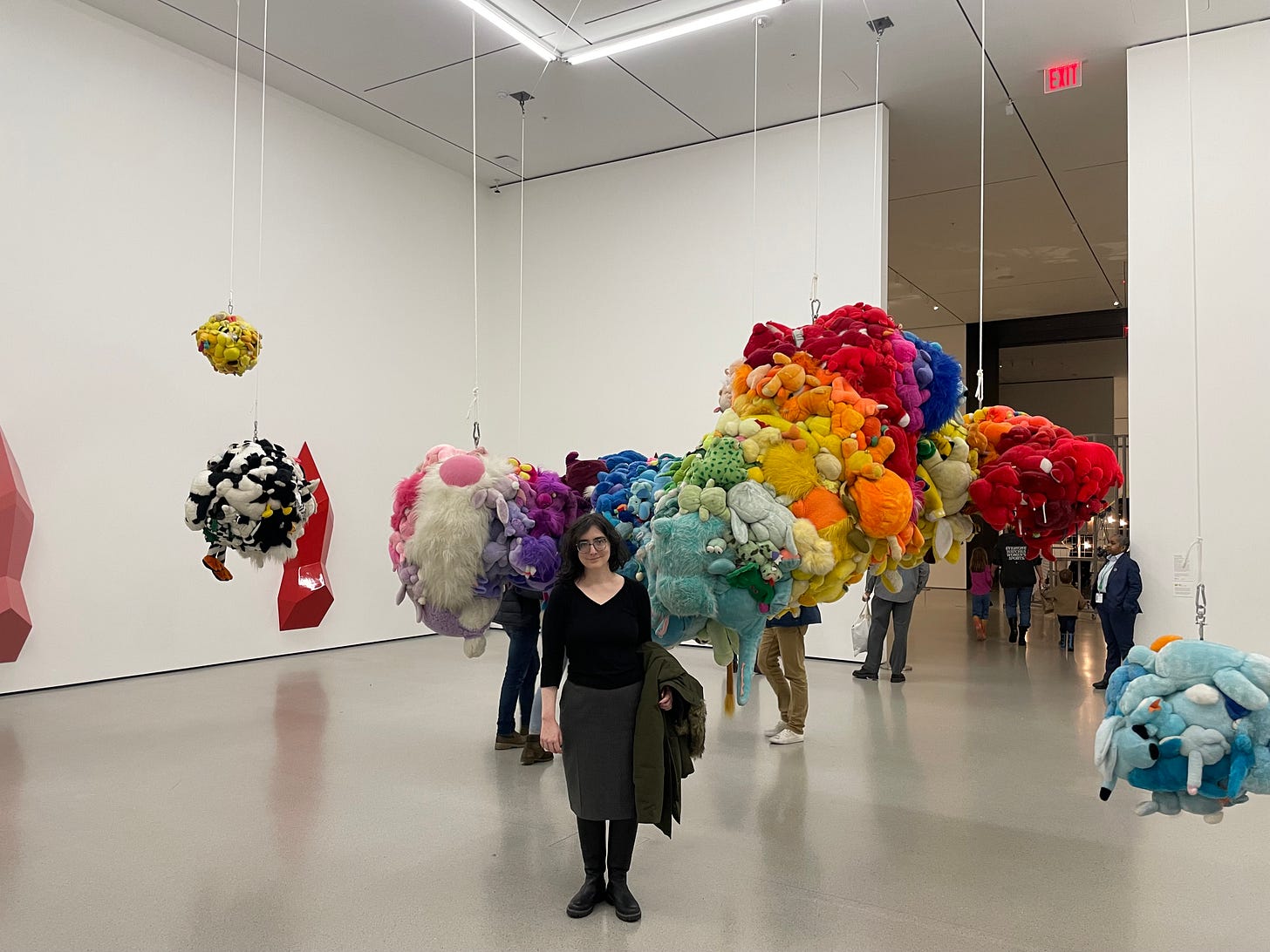so elegant so intelligent
going to moma
Whenever I visit Austin, he says, let’s go to MoMA—and then we never go to MoMA. Until my most recent trip, when love conquered all (the Q train). Something I found myself thinking is that while I used to visit New York to see him and feel like an exile—I’ll be back…—now I just feel like a tourist.1 And while the line on New York is that it’s a great place to visit but you wouldn’t want to live there, it’s really the other way around. If I go back to MoMA I would like to spend time on one floor or a few rooms. In theory, this is an easy thing to do as a resident.2 But when you’re visiting you look at the ticket and you think… I am getting the most museum I possibly can out of this.
Some institutions out there generate a lot of self-mythology… but MoMA doesn’t seem to be one of them. There are a couple books about MoMA out there, including one with the promisingly gossip-y title Good Old Modern. It is out of print, though I did manage to find a co…


